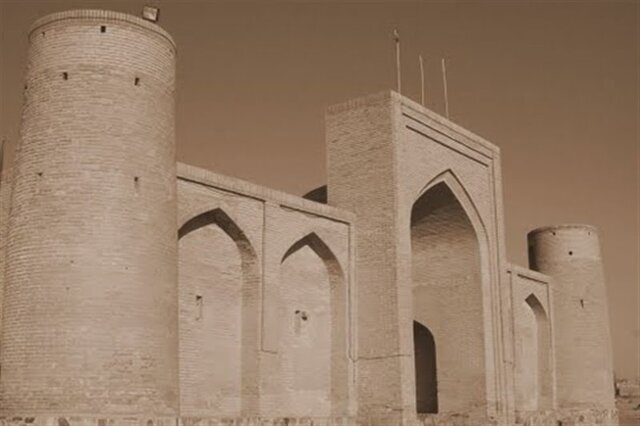Tehran-Fakhr-e Davoud Rabat is one of the most prominent covered caravan salées in the Holasan region, with unique architecture and special geographical conditions on the Silk Road route.
It was added to the UNESCO World Heritage List in September 2023 and was registered as a historic monument dating back to the Timrid era.
Rajabali Labbaf-Khaniki, a researcher and archaeologist in the Khorasan area, told Isna that various forms of Caravanserais or Rabats were constructed with special construction materials proportional to the geographical situation.
For example, the Caravansaray, located on a mountain road, was a roofed building built of stone and mud mortar, he said. The caravansaray in the plains was larger and housed more tourists, he added.
He said the Royal Caravan Sale (Labat) was built on busy roads connecting big cities with one another. They were palaces for dealing with kings and high officials, he added.
Fakhr-e Davoud Rabat is one of the most beautifully roofed Caravanserais along Silk Road in the Khorasan area, he said.
It is located near the south of the village of Fakul y Davod, 56km southwest of Mashhad and 400 meters from Mashhad Niesabur Road, he added.
The Caravanserai is built with construction materials such as bricks, plaster mortar, sand, limestone and mudstone, he explained.
Labbaf-Khaniki added that there are four cylindrical towers at four corners of Caravanserai. Apart from empowering the monument, the tower was used as a watchtower and defence tower to protect the safety of Karavanserai.
He continued that the interior space of Caravanserai included four brick pillars in the middle, and a square hall with leather built on the side walls. To cover it, there is a dome over every Ibunchi.
Labbaf-Khaniki also said that Fakhr-e Davoud Rabat has received a lot of attention from tourists and visitors.
French historian Henri Rene Dalmany named it Hassanabad Rabat.
Orientalist Hotsam Schindler wrote in his travelogue that in the village of Fakhr-e Davoud, there is a roofed Caravanserai that has been repaired twice.
Also, 1899 travel writer Afzal Al-Molk did Fakhr-e Davoud and Caravanserai like this.
Sani Al Dora, Minister of Impressions of Naseredin Shah Qajar, saw the building many times and stated it at the beginning of Al Sham after stating its geographical location. Built on top of this platform, Cubit is a place for pilgrims and passersby, under which caravan goods are stored. ”
The Khorasani researcher and archaeologist said: Sunbust, this building was founded during the Timulid era and would likely have been later renovated. ”
Fakhr-e Davoud Rabat has been registered at No. 2108 of the National Heritage List.
KD

